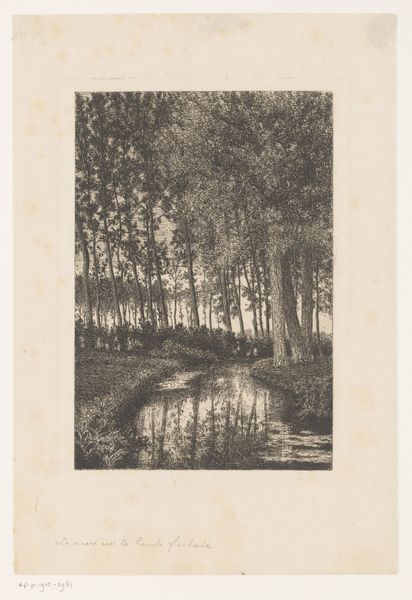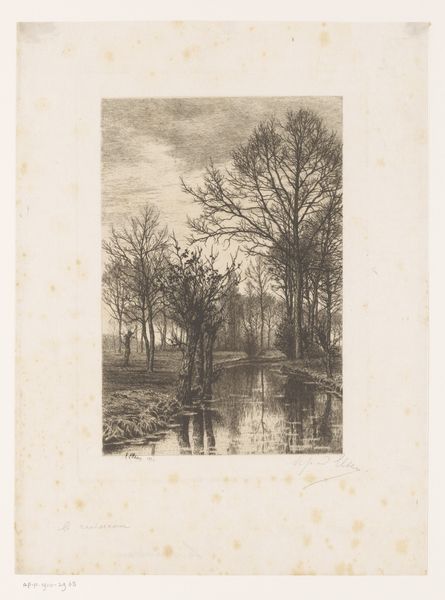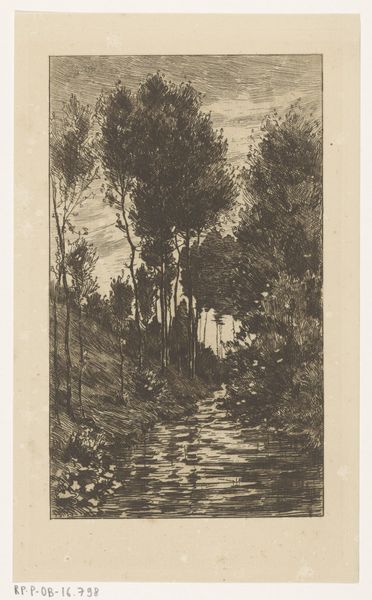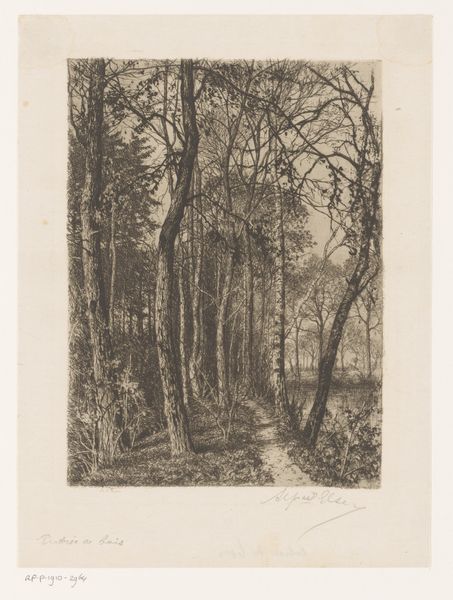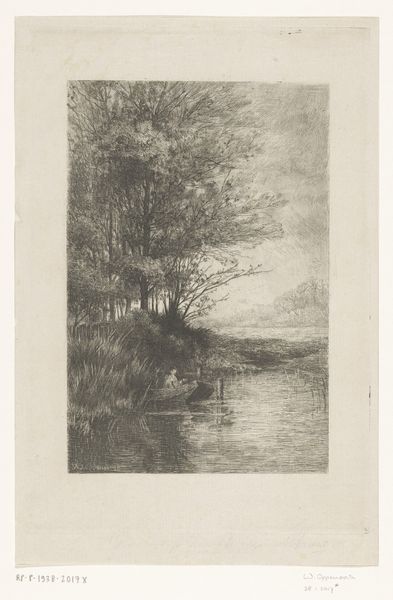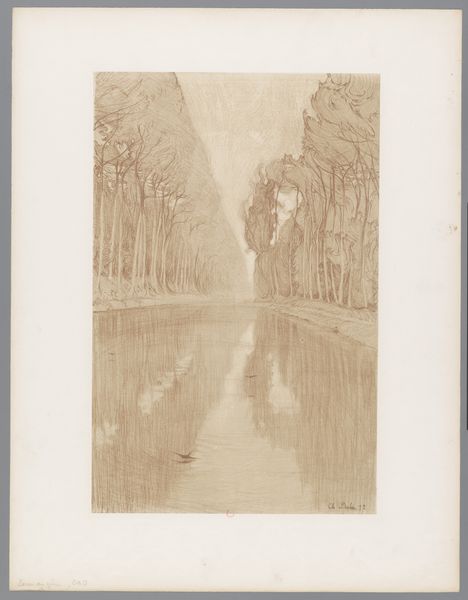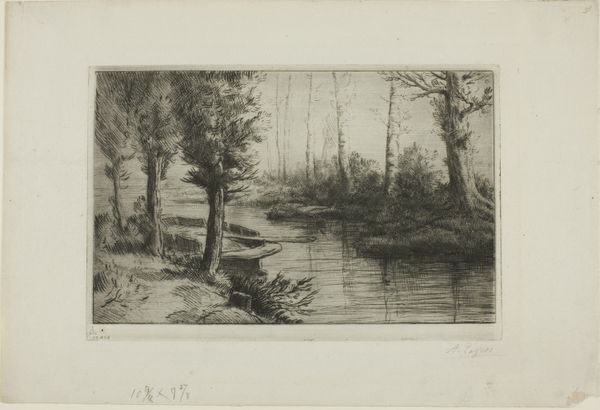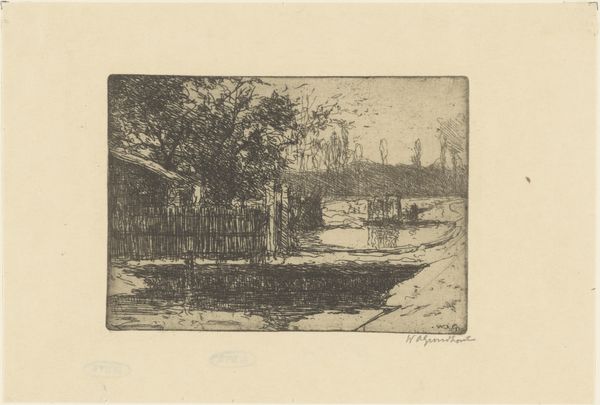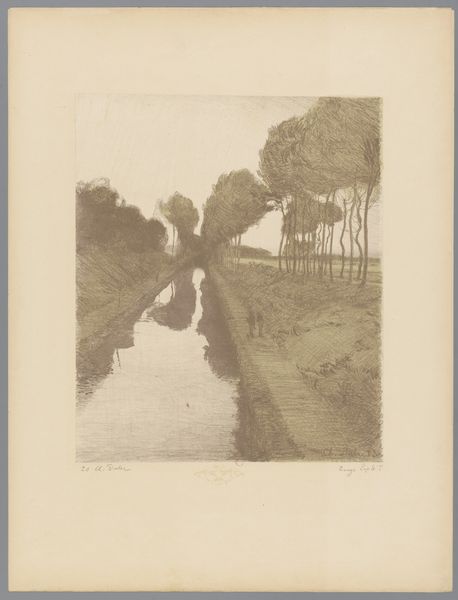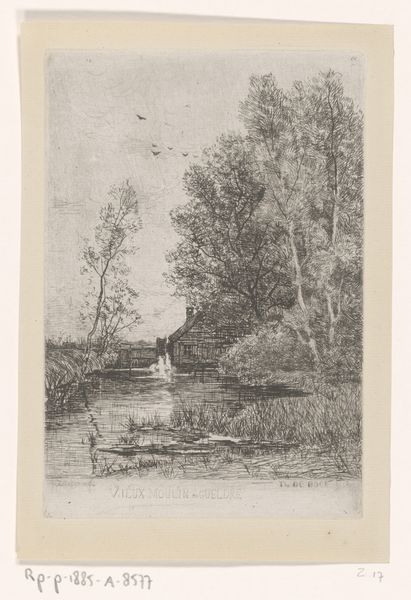
print, etching
#
dutch-golden-age
# print
#
etching
#
landscape
#
line
#
realism
Dimensions: height 320 mm, width 238 mm
Copyright: Rijks Museum: Open Domain
Editor: This is "Gezicht op de Herentalse Vaart met daaronder een liggende hond," a print by Armand Collard created sometime between 1848 and 1909. The scene, rendered in etching, depicts a canal flanked by tall trees, with what seems to be a sleeping dog in the lower portion of the print. What really grabs my attention is the way the dark, still water of the canal reflects the trees so perfectly. How do you interpret this work? Curator: I find it fascinating to consider how this quiet landscape scene intersects with the burgeoning industrialization of the period. Canals, like the Herentalse Vaart, were vital arteries for trade and transport. Collard gives us this tranquil scene but consider its original purpose: commerce and connection to other regions. Even the presence of the dog is interesting – a symbol of domesticity perhaps juxtaposed against the commercial waterway? Editor: That’s a fascinating point about industrialization! I hadn’t considered that. So, the seemingly peaceful scene carries a subtext about the changing economic landscape? Curator: Precisely. Also, consider the accessibility of printmaking. Etchings like this allowed for wider distribution of images. How did art of this nature reach public view at this time, and was there an intentional strategy related to accessibility and appealing to a wider segment of the public? And also, did the presence of an easily consumable print facilitate public engagement with the broader themes it reflected? Editor: I didn't realize the implications beyond the beautiful landscape; thank you for widening my view! Curator: And thank you. It is stimulating to examine what we think about our art today with considerations as they pertained to distribution and the context of accessibility.
Comments
No comments
Be the first to comment and join the conversation on the ultimate creative platform.

